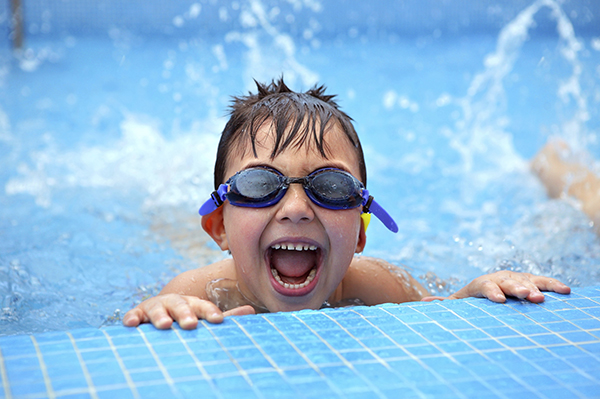Summertime has arrived and with it there are plenty of opportunities for fun at the beach or pool. There are many fun memories to be made!
In order to keep children safe, always supervise them while they are in and around water. Many people don’t know that drowning is not like it is often portrayed on TV. There may be no splashing or calls for help -- drowning is a silent killer. If you notice a child is missing from a family gathering and there is water nearby, don’t look inside the house, immediately check the pool and/or spa.
To help protect family members, make sure children take swimming lessons when they are ready, usually after age 4. Summertime is a great time to begin. Check with the local department of parks and recreation or Red Cross chapter to find a certified instructor, and look for classes that include emergency water survival training.
Whether it occurs in a bathtub, a pool, or any body of water, drowning is the second leading cause of death for children under the age of 14. When a child is under water and can’t breathe, oxygen stores in the body begin to deplete. When the body’s oxygen reserves fall below the critical level, the heart loses its ability to beat. After being starved of oxygen for as few as 10 minutes, lungs and other organs are damaged. This is followed by brain damage.
Following are some guidelines about children and water safety, provided by LLUCH Safe Kids.
- Stay where you can see, hear, and reach children in water. Avoid talking on the phone, preparing a meal, reading, and other distractions.
- Children should swim only in designated and supervised swimming areas.
- Teach children never to swim alone.
- Use barriers to keep kids away from water when you're not around.
- Never prop open the gate to a pool barrier. Don't leave toys that could attract children in or around a pool.
- Empty buckets, wading pools, and other containers immediately after use, and store upside down and out of reach.
Pool drains are an often-overlooked drowning hazard.
- Teach children never to go near a pool drain, with or without a cover, and to pin up long hair when in water.
- Know where the manual cut-off switch for the pump is in case of emergency. Consider installing an approved safety vacuum release system (SVRS), a tool that quickly and automatically turns off the pump (and stops the suction) when something is trapped in or blocks the drain.
- Use life jackets and other safety gear, but know that any child can get in trouble in the water, even if he is wearing a life jacket or has taken swimming lessons.
- Always wear U.S. Coast Guard-approved personal flotation devices (PFD) while on boats, in or near open bodies of water, or participating in water sports. A PFD should fit snugly and not allow the child's chin or ears to slip through the neck opening.
- Air-filled swimming aids, such as water wings and inner tubes, are not safety devices and should never be substituted for PFDs.
- Learn CPR and keep rescue equipment (like a lifesaving ring), a telephone and emergency phone numbers poolside.
- Everyone should know the water safety rules.
- Forty-four states have laws that require children to wear PFD's while participating in recreational boating, The U.S. Coast Guard has also issued a rule requiring children under 13 to wear PFDs on board recreational vessels on Coast Guard waters. The rule applies to states without PFD laws. Recreational boats must carry one properly sized, U.S. Coast Guard-approved PFD that is accessible and in good condition for each person on board.
- Teach kids the safe way to help someone in trouble in the water: call for help and throw the person something that floats.
- Don't let children dive into water less than nine feet deep, and no one should dive into a river, lake, or ocean.
- Children ages 16 and under should never operate personal watercraft.
The water safety entry on the Safe Kids’ web page is available here.

